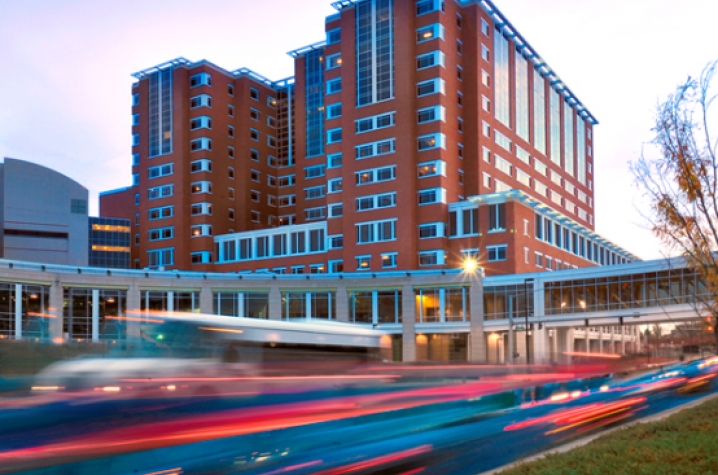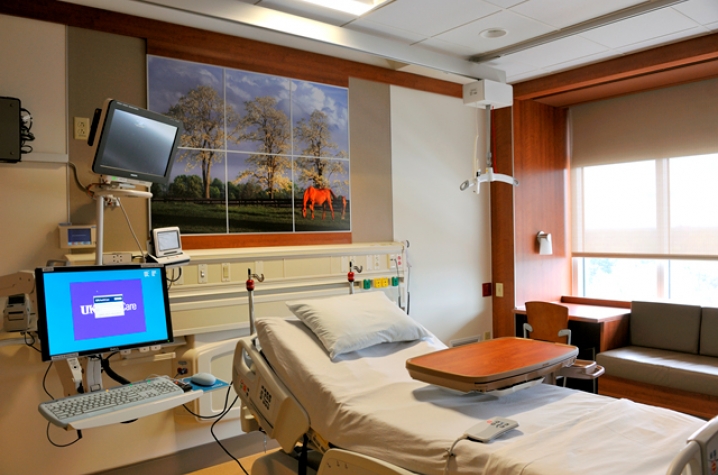UK HealthCare Turnaround Helping Lead University Toward Top 20
LEXINGTON, Ky. (May 12, 2011) – When Lee T. Todd Jr. came to the University of Kentucky in 2001, he quickly knew there were serious challenges at one of UK’s signatures – the Albert B. Chandler Hospital.
“We were losing good doctors. The number of patients being seen was declining, which was impacting the bottom line, and people simply weren’t communicating with one another,” Todd said recently, reflecting on the early challenges during his tenure at the hospital. “We decided to organize it differently. We put it under the provost system pretty early where all the deans report to the provost. So, you’ve got the deans from the medical center area along with the main campus all meeting together all the time.”
For a transcript of the video above, click here.
That wasn’t the only significant, early change made by Todd. In 2003, he recruited Dr. Michael Karpf, the former head of the No. 3 ranked UCLA Medical Center, to run UK HealthCare. “Bringing in Mike Karpf from UCLA was a Godsend,” Todd said.
From there, the turnaround – and subsequent tremendous growth of the health care enterprise – happened with amazing speed.
Since 2004, payroll at UK HealthCare, including Chandler Hospital and the College of Medicine, has gone up more than $350 million; the number of full-time employees has increased by 2,160 since 2004 and the annual budget for UK HealthCare now approaches $1.5 billion.
And, as importantly, under Karpf, retention of doctors increased and recruitment of some of the nation’s best clinicians and researchers took off with renowned recruits such as Dr. Mark Evers to run the Markey Cancer Center, Dr. David Moliterno at the Gill Heart Institute and Dr. Jay Zwischenberger as the head of surgery, among many others.
For a transcript of the video above, click here.
The remarkable turnaround is one of the chief hallmarks of Todd’s tenure as UK President. It will be capped off by the dedication May 15th of the new Pavilion A of the University of Kentucky Albert B. Chandler Hospital – a $532 million expansion of the decades-old hospital completely paid for with clinical revenues.
For a transcript of the video above, click here.
The state-of-the-art facility will be one of the most technically advanced hospitals in the country, with all private rooms, an innovative approach to using art to help in the healing process and a limestone facade and landscaping that reflects the spirit of Kentucky.
Todd, who retires in June after 10 years at the helm of his alma mater, has presided over one of the more consequential periods in UK’s history as the university embarked on a quest to become a Top 20 public research institution in the midst of significant economic hardship.
This story, about the transformation of UK HealthCare, is third in a series about significant aspects of Todd’s tenure. Other stories have chronicled the institution’s Top 20 efforts and the relationship with UK athletics. Future stories will look at students and the growth of research at UK.
Today, as a result of the changes and growth, Karpf said UK HealthCare ensures that “we are as competitive (in the health arena) as national champions in basketball,” an approach he said that is consistent with Todd’s philosophy about the entire university.
“Dr. Todd wants us to be competitive as national champions in engineering; he wants us to be competitive as national champions in science and he wants us be competitive as national champions in health care,” Karpf said.
The proof of that competitiveness is seen in the remarkable growth and numbers at UK HealthCare in the last 10 years under Todd and Karpf:
- Hospital revenues for Chandler and Good Samaritan Hospital have increased nearly $500 million since Fiscal Year 2004, while full-time employee numbers have increased by 84 percent in 7 years.
- During the same time period, salary and benefits at the health-care enterprise have increased from $365 million to $630 million, with another nearly $50 million in growth expected for 2011.
- More than $1 billion has been invested since 2004 in clinical programs, construction, buildings, equipment and software.
- Discharges – the number of patients treated and released -- have grown from a low of 19,000 in 2003 to more than 33,000 this year.
- And the growth and health of the hospital has spurred growth in the College of Medicine, which has steadily climbed up the ranks of premier research colleges in the country as measured by the National Institutes of Health. The number of College of Medicine employees has increased by 900 people – from 3,048 to 3,989 – since Fiscal Year 2004.
- Faculty numbers in the college have increased by 21 percent in all areas, largely driven by the growth in the hospital.
- And the hospital has struck up regional partnerships with local providers across the state – Rockcastle, St. Claire in Morehead and Harrison Memorial, to name a few – offering the opportunity for patients to receive care closer to home. Patients are transferred to UK HealthCare when they develop serious illnesses, requiring acute subspecialty care.
For a transcript of the video above, click here.
Karpf credits Todd with creating a vision and setting expectations and then allowing managers and leaders to get the job done. “What impressed me was the way he could delegate responsibilities comfortably and how he chose people,” Karpf said. “He made sure they touched base with him to keep him fully informed, but he gave them plenty of run room and allowed them to be creative.”
That leeway led to significant strategic planning early on and a focus on two things – an emphasis on the complex health problems that an academic medical center is best positioned to handle and a focus on Kentucky and communities throughout the state.
“Lee was very proud of the fact that we made a commitment that we would be able to keep Kentuckians in Kentucky for complex medical problems and not have them worry about whether or not they could afford to go out of state or have coverage,” Karpf said. “He understands small-town Kentucky. That’s his roots and he’s never forgotten them.”
That deep, emotional tie to Kentucky – along with a vision to propel the university up the national rankings -- perhaps, enabled Todd to better sell his and Karpf’s plan for creating a nationally recognized medical center.
“I recall a conversation with a physician we were trying to recruit. I said that you could go to Harvard or Yale, but 10 years from now they will still be the same Harvard and Yale,” Todd said. “If you come here now, at Kentucky, in 10 years you’ll look back and tell your children, I helped change the place.
People want to do that. They want to leave a footprint and I just get a thrill from hearing those that come here from elsewhere that want to help us attack those issues.”







